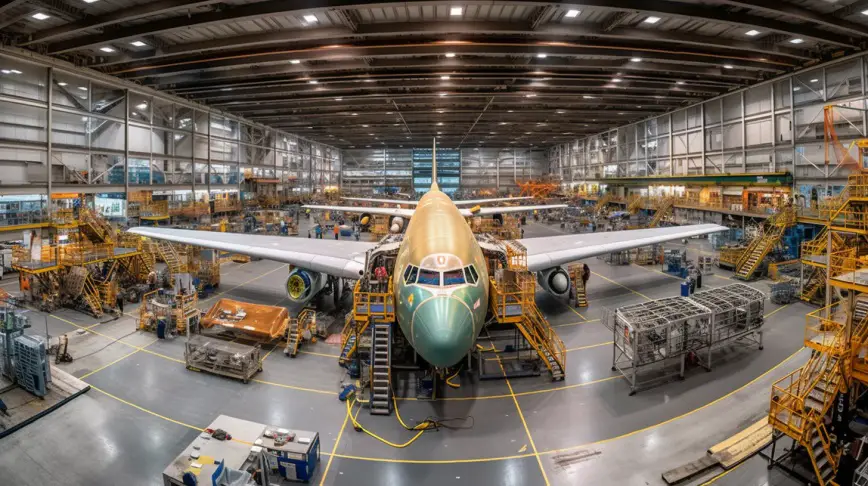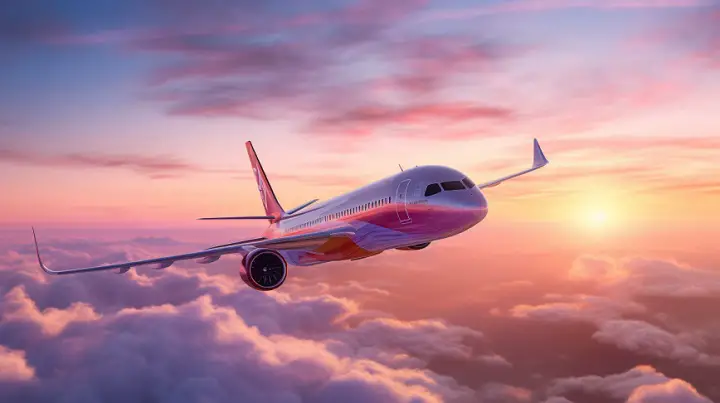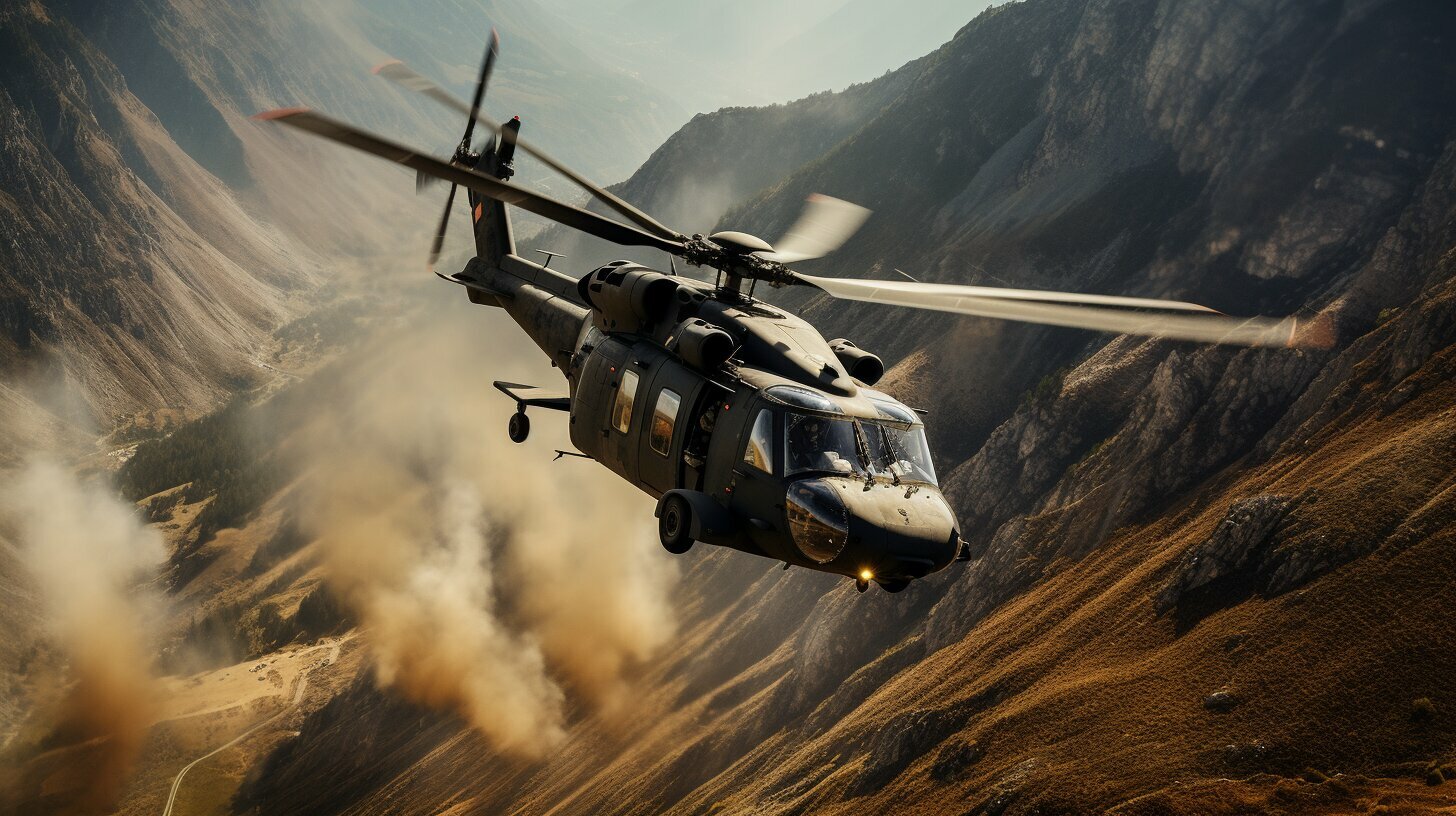
The Role of Helicopters in Military Missions
Helicopters have become an integral part of modern military operations, providing a wide range of capabilities that enhance the effectiveness and survivability of ground troops. These versatile aircraft are capable of transporting troops and equipment, providing close air support, conducting reconnaissance and surveillance, and performing search and rescue missions. They play a critical role in logistics and transportation operations, supporting military readiness in remote and challenging environments.
In this article, we will explore the various mission roles of helicopters in military operations. From combat support to humanitarian assistance and disaster relief, we will highlight their capabilities and limitations, as well as their future potential in the evolving landscape of modern warfare.
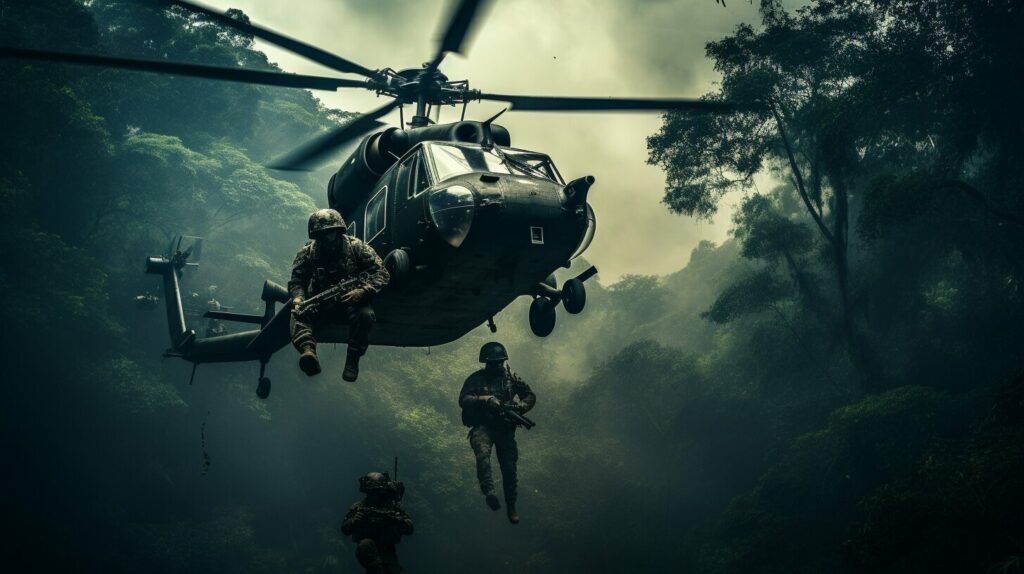
Troop Transport
One of the primary roles of helicopters in military missions is troop transport. Helicopters provide the military with an agile and flexible transportation option to quickly move troops and equipment to and from various locations on the battlefield. Their ability to land in remote and challenging terrain makes them particularly useful for tactical insertion and extraction of troops in hostile environments.
Helicopters are often used for rapid deployment of troops in response to emergencies or to support offensive operations. They can transport soldiers directly to their destination, bypassing roadblocks and other obstacles that may impede ground transportation. Additionally, helicopters can fly at low altitudes, making them less susceptible to detection by enemy radar systems.
Helicopters can be fitted with various modifications and equipment that make them more suitable for transporting troops. For example, some helicopters have specialized seats that provide better support and protection for soldiers during transport. Others have larger cargo holds to transport equipment and supplies. Helicopters can also be equipped with weapons to provide additional support to troops during insertion and extraction.
Overall, helicopters provide the military with a critical capability for troop transport that enhances their operational readiness and effectiveness on the battlefield.
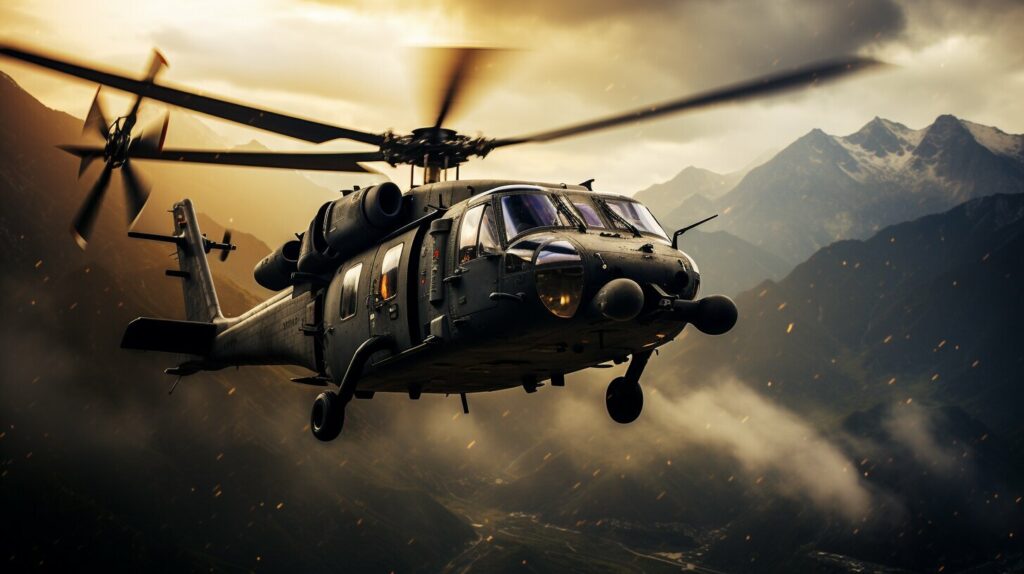
Combat Support
Helicopters are a vital asset in providing combat support to ground troops. With their agility and versatility, they can provide critical close air support, medical evacuation, and resupply missions, enhancing the effectiveness and survivability of military operations.
Close air support is one of the most crucial roles that helicopters play in combat support. They can deliver precise and rapid firepower to support ground troops during offensive operations. Additionally, they can conduct aerial reconnaissance for target acquisition, detect enemy activity, and provide situational awareness to military commanders. These capabilities make them an invaluable asset to ground troops in a combat environment.
Medical evacuation is another critical role that helicopters play in combat support. Their ability to quickly transport injured personnel from the battlefield to medical facilities can save lives and improve casualty care. Helicopters in medical evacuation missions are equipped with specialized medical equipment and trained personnel to provide critical care during transport.
Resupply missions are also a critical role that helicopters play in combat support. With their ability to quickly move personnel and equipment, they can deliver supplies and equipment to remote and challenging environments. This capability enhances military logistics and operational readiness and provides flexibility to ground forces.
Overall, the role of helicopters in combat support is critical to the success of military operations. With their ability to provide close air support, medical evacuation, and resupply missions, they enhance the effectiveness and survivability of ground troops on the battlefield.

Reconnaissance and Surveillance
Helicopters are critical assets in the arena of reconnaissance and surveillance in military operations. They have the ability to perform a wide range of aerial surveillance tasks, including gathering intelligence, monitoring enemy activities, and providing situational awareness to military commanders on the ground.
The role of helicopters in reconnaissance and surveillance missions has been vital in many conflicts, including the Gulf War and the War on Terror. They have the capability to operate at low altitudes, making them less detectable by enemy radar, while also having the ability to fly at high speeds and cover vast areas quickly.
Furthermore, helicopters can be equipped with a variety of sensors and imaging systems, such as thermal and night vision cameras, that allow them to operate in low-light conditions and detect enemy movements in real-time. They are also capable of deploying small teams of reconnaissance personnel, allowing for increased versatility and agility in intelligence gathering.
“Helicopters have been an invaluable asset in providing real-time intelligence and situational awareness to military commanders in the field. They have saved countless lives by helping to identify enemy positions and movements, allowing for tactical decisions to be made quickly and effectively.”
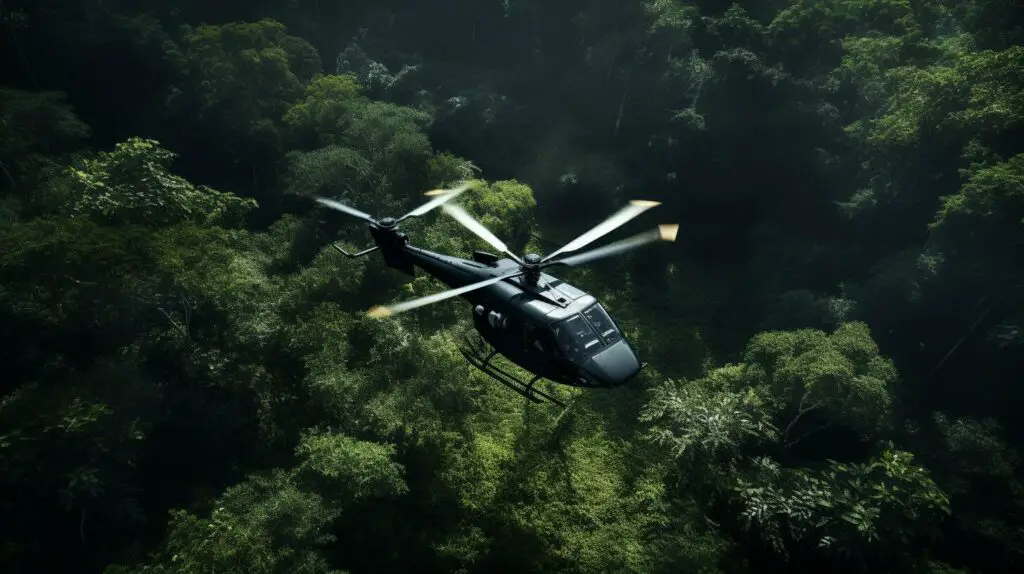
Search and Rescue
Helicopters play a vital role in search and rescue operations by providing critical medical assistance, extracting individuals in distress, and reaching remote locations that are inaccessible by other means. With their ability to hover in place and land in tight spaces, helicopters provide a unique advantage in emergency response situations.
In natural disasters or other crises, helicopter search and rescue teams are often the first responders on the scene, providing medical care and evacuating victims to safety. Helicopters can also be equipped with specialized equipment such as winches, baskets, and stretchers, allowing them to effectively transport injured individuals in challenging environments.
Additionally, helicopters are able to assist in search and rescue missions by providing aerial reconnaissance and situational awareness to ground teams. They can quickly survey large areas and identify those in need of assistance, improving the efficiency and effectiveness of search and rescue operations.
Anti-Submarine Warfare
Helicopters play a crucial role in anti-submarine warfare (ASW). They are equipped with advanced sensors and weapons systems that allow them to detect and engage enemy submarines.
A key advantage of helicopters in ASW is their ability to operate from a variety of platforms, including surface ships, submarines, and shore-based facilities. This makes them a versatile and effective tool for protecting naval assets and projecting power in maritime environments.
Sensors and Weapons Systems
Helicopters employ a range of sensors and weapons systems to locate and engage enemy submarines. These include:
| Sensor/Weapon | Description |
|---|---|
| Sonar | Uses sound waves to detect submarines and other underwater objects. |
| Magnetic Anomaly Detection (MAD) | Uses magnetic sensors to detect disturbances in the Earth’s magnetic field caused by submarines. |
| Dipping Sonar | A sonar system that can be lowered into the water on a cable to detect submarines at greater depths. |
| Torpedoes | Weapon systems that can be launched from helicopters to engage and destroy submarines. |
ASW Operations
ASW operations typically involve a combination of helicopters and surface ships working together to detect and engage enemy submarines. Helicopters are often used to conduct initial searches with their sensors, then surface ships can be directed to close in and engage the target.
Helicopters can also deploy sonobuoys, floating devices that can be used to listen for underwater sounds and detect submarines. They can also use their weapons systems, such as torpedoes, to engage and destroy enemy submarines.
Airborne Assault
Helicopters are critical assets in airborne assault missions, providing rapid and precise troop insertion capabilities. They are capable of conducting vertical envelopment, hovering over the target area, and inserting troops with minimal exposure to enemy fire.
These missions require precise planning and coordination to ensure the safety and success of the operation. Helicopters are essential for transporting troops and equipment to the objective area, providing a quick and efficient way to deploy forces to a specific location.
During airborne assault missions, helicopters may also provide fire support and surveillance capabilities, enhancing the situational awareness of ground troops and increasing their effectiveness in completing the mission.
The versatility and agility of helicopters make them an ideal platform for airborne assault operations. They can deploy troops and equipment in remote and challenging environments, allowing ground forces to gain a tactical advantage over the enemy. With their rapid deployment capabilities, helicopters can also provide critical support in offensive operations, improving the overall success of the mission.
Logistics and Transportation
Helicopters play a crucial role in military logistics and transportation operations. They have the unique capability to quickly transport troops, equipment, and supplies to remote and challenging environments, enhancing operational readiness and mission success.
Helicopters are particularly useful in providing vertical lift capabilities, allowing them to move heavy equipment, vehicles, and materials to locations that are inaccessible by other means of transportation. They are also capable of delivering supplies and personnel to austere locations and responding rapidly to emergencies.
| Benefits of helicopter logistics and transportation: |
|---|
| Flexibility: Helicopters can land and take off in tight spaces and challenging terrains, providing flexibility in logistics and transportation operations. |
| Rapid response: Helicopters can operate from forward bases and respond quickly to emergencies, allowing for the timely delivery of personnel and supplies to support military operations. |
| Reduced vulnerability: Helicopters can avoid road networks that are susceptible to roadside bombs and other threats. This limits the exposure of troops and critical supplies to enemy attacks, reducing vulnerability. |
Electronic Warfare
Helicopters play a vital role in electronic warfare, utilizing a range of technologies to gather intelligence and disrupt enemy communications.
These aircraft are capable of conducting electronic warfare support measures, including electronic intelligence gathering and jamming enemy communications. Additionally, helicopters can deploy jamming pods or towed decoys to interfere with enemy radars.
The effectiveness of electronic warfare operations is enhanced by the ability of helicopters to operate at low altitudes and in difficult terrain, providing a unique advantage over fixed-wing aircraft.
The use of helicopters in electronic warfare is particularly useful in conflicts where enemies rely heavily on radio communications and electronic devices, as it can disrupt their lines of communication and reduce their ability to coordinate attacks.
As technology continues to evolve, helicopters will remain a key asset in electronic warfare operations, providing essential support to ground troops and enhancing the effectiveness of military operations.

Air Assault
Helicopters play a crucial role in air assault missions, providing rapid and precise troop insertion and supporting ground forces in offensive operations. Air assault utilizes helicopters to insert troops into an area of operations and quickly withdraw them when the mission is complete. This method provides a strategic advantage by allowing troops to bypass obstacles and ambushes on the ground.
Helicopters can conduct vertical envelopment, which involves landing troops on a designated landing zone or dropping them in by rope. This is a vital capability for conducting surprise attacks, seizing key terrain, and disrupting enemy operations. Helicopters can also support ground forces by providing close air support, suppressing enemy fire, and conducting aerial reconnaissance for target acquisition.
Overall, the ability of helicopters to rapidly move troops and equipment, provide close air support, and conduct reconnaissance make them essential assets in air assault missions. Their agility and flexibility make them a valuable tool for commanders in the tactical and operational planning of offensive operations.
Medical Evacuation
Helicopters play a critical role in medical evacuation missions, allowing for the quick and efficient transport of injured personnel from the battlefield to medical facilities. This capability saves lives and improves casualty care, making it a vital component of military operations.
Medical helicopters are equipped with specialized medical equipment and personnel, allowing for life-saving care to be administered during transport. These helicopters are often operated by specially trained medical personnel in conjunction with military pilots, providing a seamless and integrated medical evacuation system.
The use of helicopters for medical evacuation has evolved significantly over the years, with advances in technology and increased experience leading to improved success rates and reduced response times. Today, medical evacuation missions are routinely conducted in challenging and hostile environments, showcasing the versatility and adaptability of helicopters in military operations.
“Medical evacuation by helicopter is a critical capability that saves lives and improves casualty care, making it an essential component of military operations.”
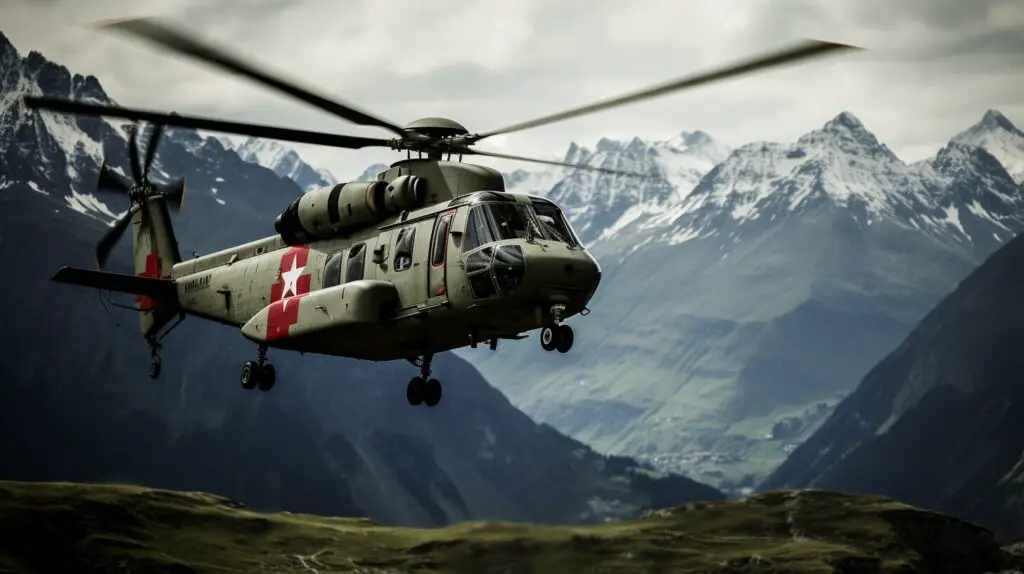
Fire Support
Helicopters play an essential role in providing fire support to ground forces. Their primary advantage is their ability to deliver accurate and rapid firepower to the battlefield. They can conduct aerial reconnaissance to acquire targets and engage them with machine guns, rockets, and missiles.
The delivery of fire support can also be in the form of suppressive fire, which involves firing in the direction of the enemy to keep them pinned down and unable to engage friendly forces. This tactic is particularly useful in urban environments, where enemy forces can take cover and conceal their movements.
In addition to engaging enemy forces, helicopters also provide fire support in the form of escort and protection. They can escort ground convoys and patrols, providing cover against any potential threats. They can also protect medical evacuation helicopters, ensuring they can safely retrieve injured personnel from the battlefield.
Overall, helicopters’ versatility and firepower make them a valuable asset in providing fire support to ground forces, enhancing their effectiveness and survivability in military operations.
Humanitarian Assistance and Disaster Relief
Helicopters play a crucial role in humanitarian assistance and disaster relief operations. Their versatility and agility make them an ideal choice for responding to natural disasters, providing aid, and conducting rescue missions, even in the most challenging environments.
In times of crisis, helicopters can quickly reach remote and inaccessible areas to provide essential supplies such as food, water, and medical aid. They can also transport rescue personnel and equipment to the disaster site, conduct search and rescue missions, and evacuate injured people to hospitals.
Moreover, helicopters can provide immediate assistance in the aftermath of natural disasters such as earthquakes, hurricanes, and floods. They can conduct aerial reconnaissance and survey the damage, locate survivors, and identify areas that need urgent attention.
Helicopters are also capable of providing emergency response during complex emergencies such as conflicts, refugee crises, and mass migrations. They can transport humanitarian workers and supplies to affected areas, support peacekeeping operations, and assist in the evacuation of civilians.
The role of helicopters in humanitarian assistance and disaster relief is critical, and their capabilities continue to evolve to respond to emerging threats and challenges. As technology advances and new mission requirements emerge, helicopters are likely to play an increasingly important role in supporting relief efforts and saving lives.
Air-to-Air Combat
While helicopters are commonly used in military missions, they have limited capabilities in engaging other aircraft in air-to-air combat scenarios. Helicopters were not designed for dogfighting and are vulnerable to even basic anti-aircraft defences.
Helicopters are not equipped with radar systems to detect enemy aircraft from a distance, and their limited speed and maneuverability make them easy targets for enemy fighters. They also lack the armaments necessary to engage other aircraft effectively.
Despite these limitations, helicopters can still play a vital role in air-to-air combat scenarios. They can provide valuable intelligence by observing enemy aircraft movements and relaying information to ground forces. They can also act as decoys to draw enemy fire away from more vulnerable targets.
In some cases, helicopters can also engage enemy aircraft in close-quarters combat, using their agility and maneuverability to outmaneuver their opponents. However, these situations are rare and typically reserved for highly skilled and experienced pilots.
FAQ
Q: What is the primary role of helicopters in military missions?
A: Helicopters have a versatile range of capabilities that make them an essential asset in various military missions. Some of their primary roles include troop transport, combat support, reconnaissance and surveillance, search and rescue, anti-submarine warfare, logistics and transportation, electronic warfare, air assault, medical evacuation, fire support, and humanitarian assistance and disaster relief operations.
Q: What makes helicopters such an important asset in military operations?
A: Helicopters are versatile and can perform a wide range of missions that other aircraft cannot. They can operate in challenging environments and provide rapid mobility, reconnaissance, medical evacuation, and close air support.
Q: What are some of the main types of military helicopters?
A: Military helicopters can be broadly categorized as attack helicopters and transport helicopters. Attack helicopters are designed to engage enemy targets, while transport helicopters are used for troop transportation, resupply, and medical evacuation.
Q: How do helicopters support special operations forces?
A: Helicopters are often used to support special operations forces by conducting covert insertions, providing aerial fire support, and extracting personnel in high-risk situations. They are also used for reconnaissance and surveillance missions.
Q: What are some of the challenges of operating helicopters in military missions?
A: Operating helicopters in military missions can be challenging due to factors such as adverse weather conditions, hostile environments, and limited landing zones. Pilots must also contend with threats from enemy fire and must be skilled in maneuvering in complex terrain.
Q: How are military helicopter pilots trained?
A: Military helicopter pilots undergo rigorous training that includes classroom instruction, simulator training, and flight training. They must also demonstrate proficiency in various operational scenarios and undergo recurrent training to stay up-to-date on new technologies and tactics.
Q: How do helicopters provide troop transport in military operations?
A: Helicopters are an efficient and flexible means of transporting troops to and from various locations. They can quickly move personnel and equipment, providing agility and flexibility on the battlefield. The ability to transport troops rapidly and insert them into areas of operation makes helicopters an essential asset in military missions.
Q: What is the role of helicopters in combat support?
A: Helicopters provide essential combat support to ground troops. They offer close air support, medical evacuation, and resupply missions, enhancing the effectiveness and survivability of military operations. Helicopter crews use their specialized training and equipment to provide swift and precise support to troops in need.
Q: How do helicopters gather intelligence and provide situational awareness?
A: Helicopters are utilized for reconnaissance and surveillance purposes. They are equipped with specialized sensors and cameras that can gather intelligence, monitor enemy activities, and provide situational awareness to military commanders. The data provided by helicopters can help military leaders make informed decisions and take action in real-time.
Q: How do helicopters assist in search and rescue operations?
A: Helicopters are essential in search and rescue operations due to their ability to reach remote locations, extract individuals in distress, and provide critical medical assistance during emergencies. Helicopter crews are trained to conduct rescue operations and provide emergency medical care to individuals in need.
Q: What is the role of helicopters in anti-submarine warfare?
A: Helicopters play a crucial role in anti-submarine warfare by detecting and tracking submarines, deploying weapons, and protecting naval assets in maritime operations. The unique capabilities of helicopters make them an essential asset in the detection and neutralization of underwater threats.
Q: How are helicopters utilized in electronic warfare?
A: Helicopters are used in electronic warfare to disrupt enemy communications, gather electronic intelligence, and conduct electronic warfare support measures. Helicopter crews are trained to use specialized equipment to interfere with enemy communications and provide electronic protection to military forces.
Q: How do helicopters support ground forces during air assault missions?
A: Helicopters provide rapid and precise troop insertion, supporting ground forces in offensive operations. They can conduct vertical envelopment and support troops in hostile environments, providing a critical advantage on the battlefield.
Q: What is the primary role of helicopters in medical evacuation missions?
A: Helicopters provide a critical role in medical evacuation missions. They can quickly transport injured personnel from the battlefield to medical facilities, saving lives and improving casualty care. Helicopter crews are trained to provide medical assistance during transportation, ensuring that patients receive the care they need.
Q: Can helicopters engage in air-to-air combat?
A: While helicopters have limited capabilities in engaging other aircraft, their primary focus is on other mission roles rather than engaging enemy aircraft. However, in certain situations, they can engage in air-to-air combat scenarios.
Q: What does the future hold for helicopters in military missions?
A: The future of helicopters in military missions will likely involve the integration of advanced technologies, such as unmanned systems and artificial intelligence, to enhance their capabilities and improve mission effectiveness. Helicopters will continue to play a critical role in a wide range of military missions, ensuring that military forces have the agility, flexibility, and support they need to succeed.



